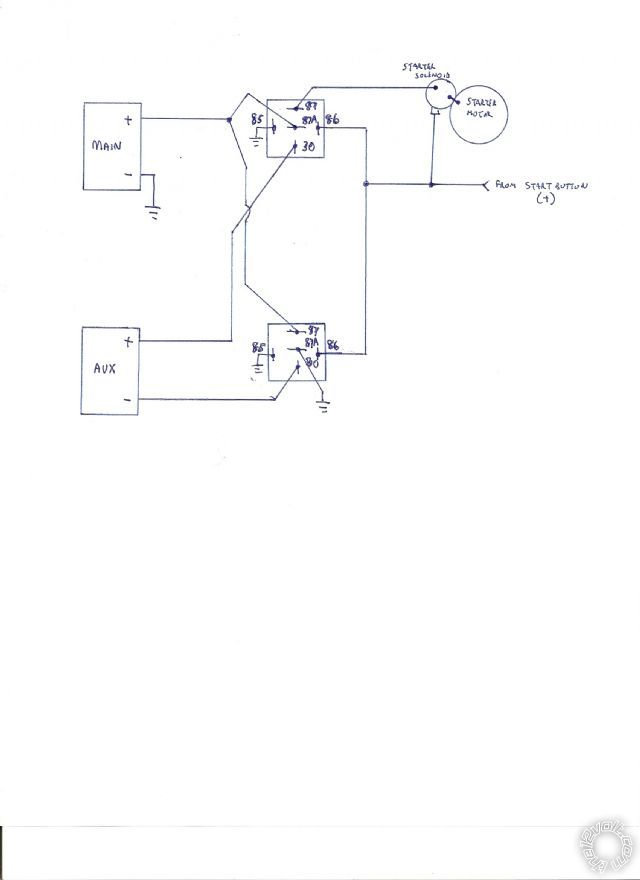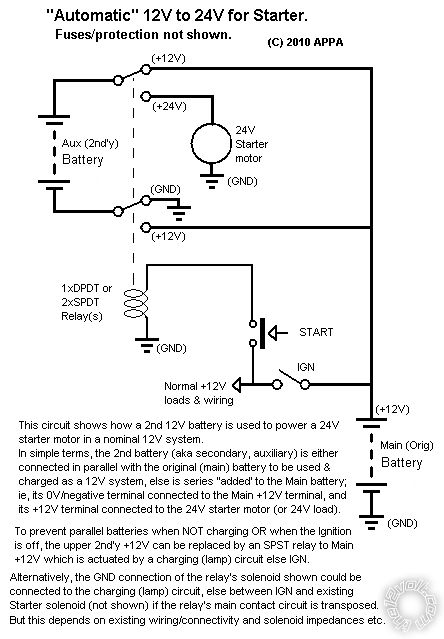Posted: February 12, 2010 at 1:42 PM / IP Logged
Posted: February 12, 2010 at 2:50 PM / IP Logged
Posted: February 12, 2010 at 2:57 PM / IP Logged
Posted: February 12, 2010 at 3:16 PM / IP Logged
Posted: February 12, 2010 at 4:33 PM / IP Logged
Posted: February 13, 2010 at 3:25 AM / IP Logged
Posted: February 15, 2010 at 4:38 PM / IP Logged
Posted: February 15, 2010 at 8:37 PM / IP Logged
Posted: February 16, 2010 at 3:26 AM / IP Logged
Sorry, you can NOT post a reply.
This topic is closed.
 Printable version
Printable version


| You cannot post new topics in this forum You cannot reply to topics in this forum You cannot delete your posts in this forum You cannot edit your posts in this forum You cannot create polls in this forum You cannot vote in polls in this forum |

| Search the12volt.com |
Follow the12volt.com 
Tuesday, December 16, 2025 • Copyright © 1999-2025 the12volt.com, All Rights Reserved • Privacy Policy & Use of Cookies


Tuesday, December 16, 2025 • Copyright © 1999-2025 the12volt.com, All Rights Reserved • Privacy Policy & Use of Cookies
Disclaimer:
*All information on this site ( the12volt.com ) is provided "as is" without any warranty of any kind, either expressed or implied, including but not limited to fitness for a particular use. Any user assumes the entire risk as to the accuracy and use of this information. Please
verify all wire colors and diagrams before applying any information.











 The drawing notes mention extra enhancements but do not provide the detail directly.... (But look at Ween's wiring, and assuming the starter solenoid is....)
The enhancements reflect that parallel connection of batteries is NOT desirable UNLESS charging or in use for extended reserve time. (Parallel idle (unused) batteries leads to premature failure of the batteries.)
The notes hence suggest an alternative "normal" connection of 24V mode (ie, with ignition off or when starting) and that the DPDT relay is energised only when charging OR when the ignition is on - therefore isolating the batteries when not in use.
Alternatively, another relay can be inserted into the proposed circuit that only connects the +12V of each battery when charging or ignition on.
The former requires that the DPDT relay is ON when the vehicle/bike is in use whereas for the latter, the DPDT relay is only ON when starting - but that requires and exra relay which is ON when (the bike is) in use - ie, either IGN is ON or the alternator is charging (depending on what is desired).
Remember though - this is only to keep the batteries isolated (NOT paralleled) when the vehicle of off, for longer and independent battery life.
Simple, isn't it?
The drawing notes mention extra enhancements but do not provide the detail directly.... (But look at Ween's wiring, and assuming the starter solenoid is....)
The enhancements reflect that parallel connection of batteries is NOT desirable UNLESS charging or in use for extended reserve time. (Parallel idle (unused) batteries leads to premature failure of the batteries.)
The notes hence suggest an alternative "normal" connection of 24V mode (ie, with ignition off or when starting) and that the DPDT relay is energised only when charging OR when the ignition is on - therefore isolating the batteries when not in use.
Alternatively, another relay can be inserted into the proposed circuit that only connects the +12V of each battery when charging or ignition on.
The former requires that the DPDT relay is ON when the vehicle/bike is in use whereas for the latter, the DPDT relay is only ON when starting - but that requires and exra relay which is ON when (the bike is) in use - ie, either IGN is ON or the alternator is charging (depending on what is desired).
Remember though - this is only to keep the batteries isolated (NOT paralleled) when the vehicle of off, for longer and independent battery life.
Simple, isn't it?